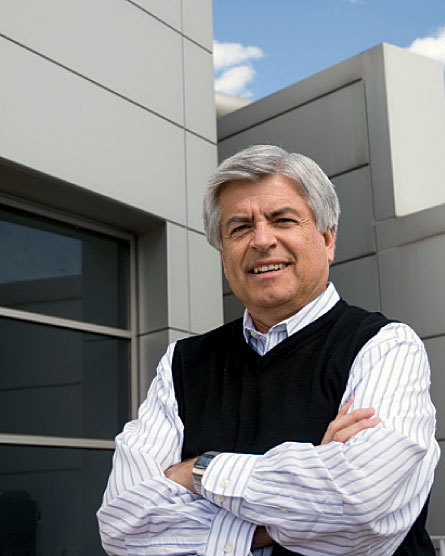On April 14, the National Science Board released a draft report called “Building a Sustainable Energy Future,” offering advice on how the United States can transition to renewable and clean sources of energy. Dan Arvizu, the cochairman of the board’s task force on sustainable energy and director of the National Renewable Energy Laboratory in Golden, Colo., recently talked with staff writer Laura Sanders about U.S. energy policy.

Only about 7 percent of the nation’s energy comes from renewable sources. How urgent is it that we increase that?
We really need to be moving very quickly … we really need to take some dramatic steps so that by 2050 we’ve substantially eliminated most of the carbon from our energy sources.… The report suggests that unless we change the policies, unless we advance how much innovation is occurring, we’re not going to get there very quickly.
Clearly the low-hanging fruit, in my mind, is let’s do energy efficiency first. Let’s get a lot better about efficiency. That reduces the burden on what the supply needs to look like. And for my money, those cost-effective technologies that are clean and renewable today, it makes sense to use as much of that as we can. We’re not promoting one technology over another, but we are saying, “Let’s be focused on what our objectives are, and let’s be about the business of making that transformation.”
How coordinated is U.S. energy policy both nationally and internationally?
We really don’t have a nationally coordinated approach to the science collaboration. It’s done agency by agency. So the NSF [National Science Foundation] has one set of operating conditions and set of philosophies, DOD [Department of Defense] has another, Department of Commerce has another, Department of Energy has another, EPA has another. So all the different agencies come at it very, very differently. And quite frankly, the international community is confused, and they say, “Well, who speaks for the United States on this?”… And in fact that’s one of the conclusions we drew and one of the recommendations that we made is that we ought to have a coordinating council.
What can we learn from the experiences of other countries?
The rest of the world, in terms of their deployment and implementation, has really passed the U.S. I had the opportunity to testify in front of Congress a number of times last year and kept getting the same question — when is this stuff going to be real?
Well, the fact is that internationally, it’s a $150 billion renewable energy industry. Only 10 percent of that is in the U.S. It’s primarily driven by Europe and Asia, and they have public policies encouraging it.… So we’ve got a lot to learn.
The report notes that the government needs to lead by example. How energy-friendly are government buildings?
Not very.… It was just very clear that if the government is going to lead, the first thing we’ve got to do is practice in our own backyard. If there’s a commitment to do it, people will do it.… The good news is that we have control over the government stuff. It’s a ripe opportunity, and we really have to take advantage of it.
How important is engaging the public in this transition?
It’s probably the most important thing we need to do. Despite the fact that there are all these policies that need to be done, and the R&D needs to be done, the thing that will change those is when the public demands it. It’s not just our own behavior, but I think it’s our own understanding.… We want politicians who tell us we can have it all without paying for it, and it doesn’t cause us to change any behavior, and the politicians are happy to say it. They say, “Oh of course, yeah, you can have it all, and you want a tax cut too?” … In Denmark, not only can you pay $8 a gallon for gasoline, in addition to that, if you buy a car, they charge you 250 percent tax. So if you buy a car that costs $40,000, it costs you $140,000. That changes your behavior…. I’m not advocating that radical kind of thing, but it shows you how different the mind-set there is than it is here.
Is the transition to a sustainable energy economy going to be painful?
I don’t think a lot of people are ready to tell you how painful it’s going to be. But the short answer is that it’s not easy. It’s complex. It takes commitment. It takes national will.
Can we have a better future if we do it? Absolutely…. I know we’re not good at preplanning and preventive medicine, but that’s what this is. Until people understand that, then they’re not going to be able to make the decisions that are necessary.